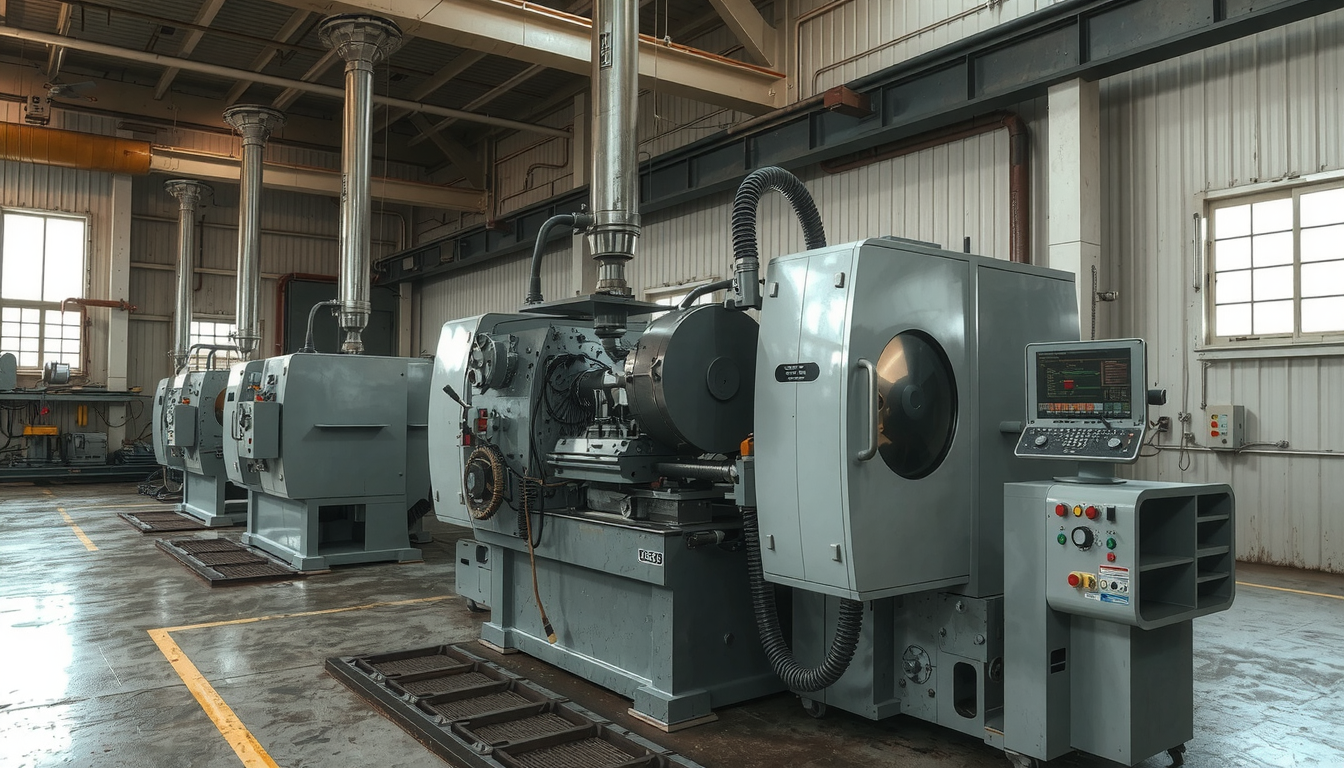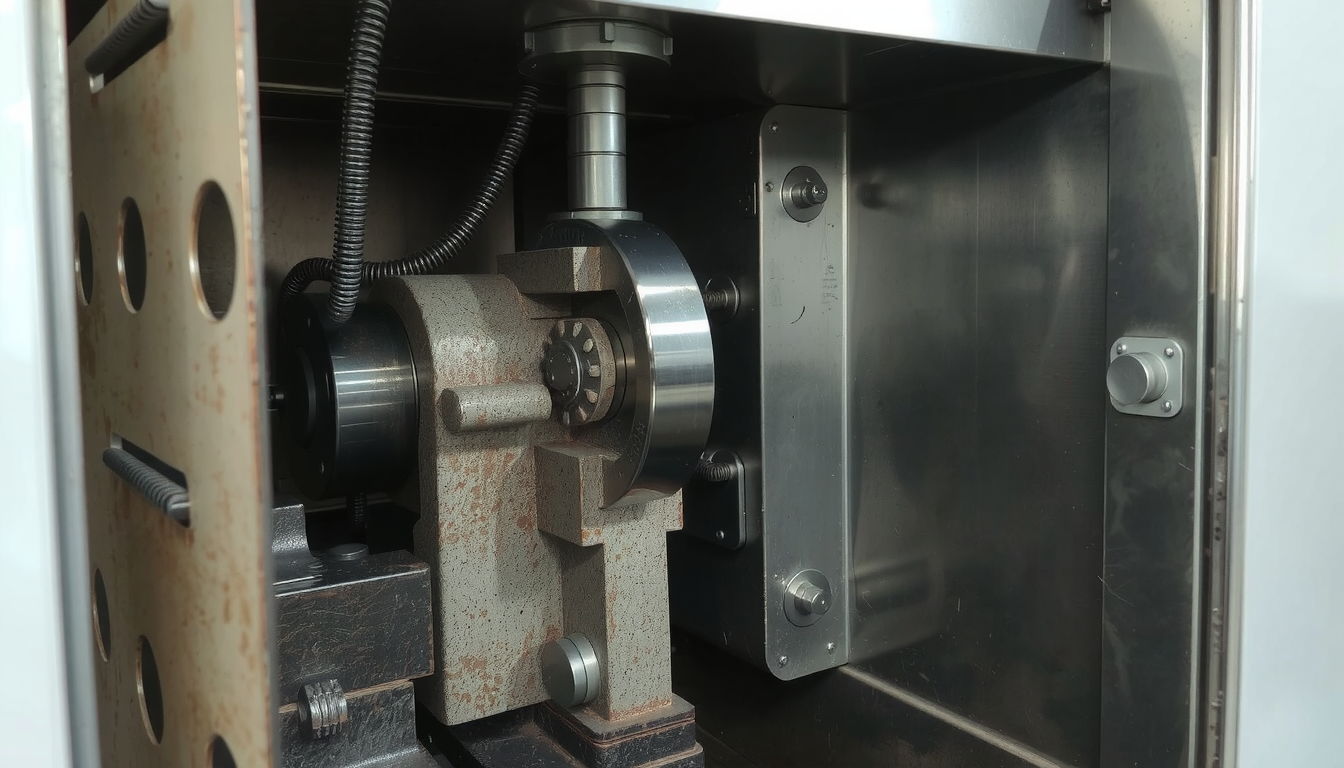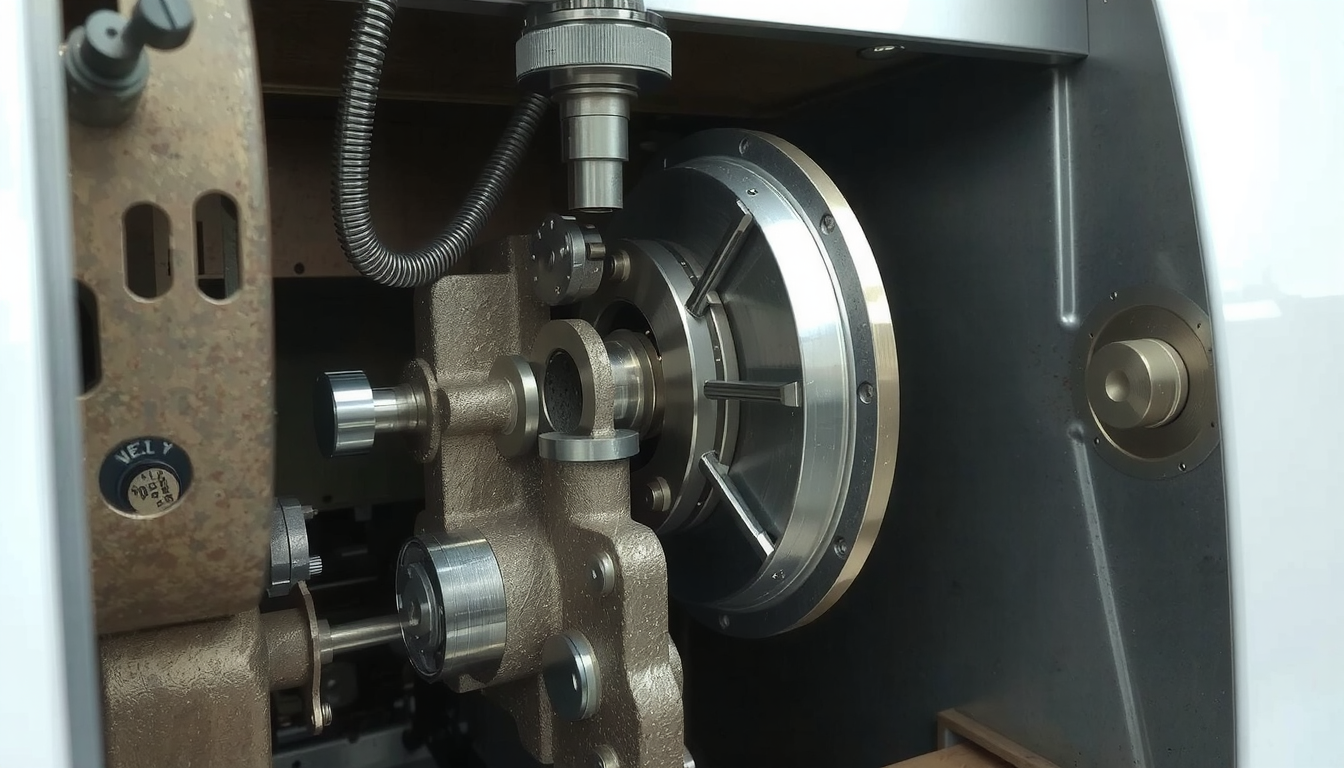Ergo, what precisely is a CNC lathe? To put it in simple words, it is a machine that is operated by the computer. It creates round components by turning a piece of material. A cutting tool moves against the desired position of the rotating material. This is a process called turning.

The part “CNC” stands for the Numerische Computersteuerung (CNC). It is a computer program that decides how the machine must move. The worker writes the program. The machine is so advanced that it can follow the orders given to it very strictly.
This is definitely an improvement over the old manual lathe. Manual machines rely entirely on the operator’s experience. The operator rotates the wheels by hand and also controls the cut by hand. A CNC lathe is able to make the same complicated cuts repeatedly thousands of times. Each piece looks very nearly identical to each other. At Mecanext, we use these incredible machines on a daily basis. They allow us to construct intricate designs with fantastic precision.
In this guide, you will learn what a CNC lathe is, how it operates, its main components, and the role it plays in modern manufacturing.
The Basic Principle: How a CNC Lathe Functions
When trying to visualize a CNC lathe working, think of it as a potter’s wheel. But instead of clay and hands, you have metal and a very precise cutting tool. The main idea is subtractive manufacturing. This means that the material is removed from the original stock material to create the new part.
The raw material is most commonly a solid bar or tube. It is clamped in place and the motor is engaged to rotate it at high speeds. The cutting tool then comes into contact with the workpiece and, gradually, the shape emerges.
The machine moves mainly in these two directions (axes):
- Z-axis: The tool moves back and forth along the length of the spinning material. This controls the length of the part and features such as steps or grooves.
- X-axis: The tool moves in and out, towards or away from the center of the material. This controls the part’s diameter.
All of these actions are controlled by the machine through a computer program. The program is transformed into a language only the CNC lathe understands. It is mostly made of G-code and M-code. G-code is the part that tells the machine where to move. M-code controls machine functions like switching the spindle on and off or switching tools.
The Layout of a CNC Lathe: The Fundamental Parts

Even though CNC lathe machines look complicated, they are formed from a number of key components working together. Learning about the CNC lathe key components is a way of beginning to understand how these machines work so precisely.
Headstock
The headstock is the real workhorse of the lathe. It consists of the main motor, gears, and the spindle. It is the one that gives the power to the machine to rotate the workpiece at very high speeds.
Spindle & Chuck
A spindle is the rotating shaft which is spun by the headstock motor. A chuck is the device fastened to the end of the spindle. It is like a strong and precise hand that holds the raw material and rotates it. Some machines do use a collet instead of a chuck for smaller or more sensitive parts.
Bed
The bed itself is the heavy, solid foundation of the whole machine. It is designed to reduce vibrations and is usually made of cast iron. All other components are mounted on the bed. This ensures the original position of all the pieces is guaranteed during work.
Tool Turret
The tool turret is a disk that rotates and holds several cutting tools. Instead of a worker manually changing the tools for different cuts, the CNC program can command the turret to rotate. Automatically, the machine picks the right tool for the operation. The functions that can be performed include turning, drilling, and threading.
Tailstock
The tailstock is located at the other end of the bed in comparison to the headstock. Its main task is to reinforce the end of a long workpiece. This way, bending or vibration due to the cutting tool operation will not take place. This is, of course, very crucial for the material to be cut accurately.

CNC Control Panel
This one is simply the brain and the user interface of the machine. Users use the control panel for loading the program and setting the parameters. They may also monitor the entire process on a screen. Essentially, it is the location where digital commands are switched to the physical machine.
From the Digital Model to the Finished Part: A Step-by-Step Workflow
Turning a digital idea into a tangible part on a CNC lathe might appear simple at first. Thanks to our dedication and expertise in the area, we accomplish this on a daily basis, ensuring top quality and precision. Here is an easy walk-through of the entire process.
Step 1: The CAD Model (The Digital Blueprint)
At all times, the starting point is a 3D model. A designer or engineer uses a Computer-Aided Design (CAD) program. A detailed digital blueprint containing the dimensions of this part will be developed by them.
Step 2: CAM Programming (The Machining Strategy)
Next, the CAD file is imported into Computer-Aided Manufacturing (CAM) software. The programmer utilizes this software for scheduling the operations of the machine. During this time, they choose the tools, the order of operations, and set the speed of the cuts and the path the tools will take. According to this plan, the CAM software will generate G-code that the CNC lathe will understand.
Step 3: Machine Setup (Preparing to Act)
The operator is responsible for the machine configuration for the work to be done. This includes securely clamping the material, called bar stock, into the chuck. They also load all the necessary cutting tools into the tool turret. Lastly, they carefully measure the position of each tool. The machine knows where the tip of every cutter is precisely because of this. The process is often referred to as setting tool offsets.
Step 4: The Machining Process (Execution & Monitoring)

The operator loads the G-code program onto the CNC control panel. First, they often run a quick simulation or a “dry run.” This is a test run of the machine without any material being used, to check for errors. After everything is confirmed, they start the automated process. The machine will then begin spinning the workpiece to cut it according to the program. The operator checks on the process.
Step 5: Quality Control & Finishing
After the machining is completed, the operator takes the part off the machine. The part is cleaned of any cutting fluid and chips. Then, the part undergoes final scrutiny and is inspected using precision measuring instruments like micrometers and calipers. This final check is the affirmation that all specifications are met according to the original design.
CNC Lathe vs. Manual Lathe vs. CNC Mill: Key Differences
Sometimes it’s simple to get confused among different machinery. Understanding what a CNC lathe is also means knowing its differences from other similar machines. This includes both manual lathes and CNC mills. This table breaks down the key differences.
| Merkmal | CNC-Drehmaschine | Manual Lathe | CNC-Fräse |
|---|---|---|---|
| Core Principle | Workpiece rotates, tool is stationary. | Workpiece rotates, tool is stationary. | Tool rotates, workpiece is stationary. |
| Kontrolle | Computer program (G-code). | Operator’s hands on wheels and levers. | Computer program (G-code). |
| Best For | Round, cylindrical parts (shafts, pins). | Simple one-off parts, repairs. | Flat or blocky parts (enclosures, brackets). |
| Precision & Repeatability | Very high, ideal for mass production. | Depends entirely on operator skill. | Very high, ideal for mass production. |
Selecting the Suitable CNC Lathe Services: What to Look For
Many companies need turned parts but do not have a CNC lathe. In such a case, you should find a reliable manufacturing partner. Being aware of what exactly to look for will help you opt for the machine shop suitable for your project.
When you are looking to hire a shop, consider these key points:
- Material Expertise: Does the shop have a record of handling the particular material that your item requires? Whether it is aluminum, stainless steel, titanium, or a special plastic, their material knowledge is crucial.
- Machine Capabilities: Inquire about the machines that the shop owns. Can they manufacture parts that need to be held to very tight tolerances? Tolerances are the acceptable range for a dimension. Do they have advanced features like live tooling if you need to produce intricate shapes?
- Qualitätssicherung: A reputable company should have robust quality control measures. Ask if they are ISO 9001 certified. How do the inspectors check parts to be sure they are a good match to your official drawings?
- Experience & Portfolio: Ask to see examples of parts they have made that are similar to yours. A strong portfolio is proof of their capacity to manage your project successfully.
When you are evaluating your potential partners, you need to find a group that is trustworthy. Our professional CNC-Drehmaschinen-Dienstleistungen have their bases in the principles of quality, precision, and extensive material knowledge.
Frequently Asked Questions (FAQ) about CNC Lathes
What materials can a CNC lathe work with?
CNC lathes can process a wide variety of materials. Specifically, they can work with many types of metals including aluminum, steel, stainless steel, brass, copper, and titanium. They can also achieve remarkable results with plastics such as Delrin, nylon, PEEK, and ABS, among others. The ultimate decision on the type of material depends on the machine’s power and the kind of tooling used.
How accurate can CNC lathes be?
They are exceedingly accurate machines. A standard lathe can easily hold a tolerance range of ±0.001 inches (about 0.025 mm). In the case of high-performance machines used in medical or aerospace, some can even achieve ±0.0005 inches (0.012 mm) or better. Such precision is required in high-tech parts.
Is it hard to learn how to operate a CNC lathe?
Learning the operation of a CNC lathe involves a learning curve. It is possible for a person to learn the basics of running a program and producing a simple part in a relatively short time. However, gaining real proficiency takes years. This encompasses programming complex parts, performing demanding setups, and problem-solving. This requires training and hands-on experience.
What is the difference between a CNC lathe and a CNC turning center?
The terms are usually used to mean the same thing. Generally, a “turning center” is a more sophisticated type of CNC lathe. It might have extra features like live tooling. This is a spinning tool for milling or drilling. Also, it could possess a sub-spindle, which is a second spindle that is used to work on the back of the part. Some are available with more axes of movement. These features are important for creating complex parts in a single setup. There are various types of CNC lathes currently available.
What are the main advantages of using a CNC lathe as opposed to a manual one?
The key advantages are automation, accuracy, repeatability, and speed. CNC lathes, for instance, are capable of making thousands of identical parts with very little human error during the process. They work much faster than manual processes do, which is ideal for working in large volumes. Additionally, they can produce very complex contours and shapes that are almost impossible for a person to make by hand.

